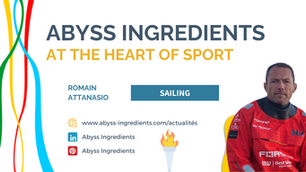
“Collagen”. This word is almost everywhere, and indeed, this is a trendy and widely used ingredient for not only cosmetic applications, but also food supplements. Global collagen market size exceeded $ 3,6 billion in 2020 with an estimated +8,3% annual growth for 2021-2027 period [1] driven by an increasing demand from the food and nutraceutical sectors and especially, in both sectors, beauty applications.
Diverse sources, types, processes… it is sometime difficult to understand and select a collagen-based product which answers our body’s needs.
Collagen, the most abundant protein in our body
Collagen is an animal protein naturally present in our body. Actually, it is the main component of what is called “connective tissues” that play a structural role in the architecture and mechanistical properties of our skin, bones, joints, tendons, muscles, nails etc…
Collagen is naturally synthetised by our body but, spoiler alert: as from 25 y.o. the collagen synthesis begins to decrease. Ageing begins and year after year, it leads to physical effects such as loss of mobility, joint discomfort, and years’ visible effects on skin over time.

Initially used to medically treat joint discomfort, collagen began to be used in cosmetics in the 90’s to reduce wrinkles and lines. In more recent years, preventive nutrition appeared to be an innovative strategy to delay ageing repercussions and, supported by scientific studies, the use of collagen in supplements dedicated to joint health and beauty increased.
What kind of collagen for me?
It seems important to talk about the possible sources of collagen, and to remind that natural collagen is necessarily made from animal source: bovine (38% of volume share in 2020 [2]) and porcine are the most common sources of collagen due to their easy availability but you can also find collagen from poultry or marine sources. This last one is particularly trendy, and revenues are expected to grow at 10% per year on 2020-2028 period [2]. |  |
 | |
Independently of these sources, there are 3 main collagen types (among the 28 existing ) [3]:
Collagen Type I is the most abundant, it composes most parts of our body (mainly skin, tendons and bones) and is made from skin and bones.
Collagen Type II composes cartilage. It is mainly made from chicken sternum.
Collagen Type III composes hollow organs’ structure (yumi!) but also skin.
What difference between type I and II ?
In the collective consciousness, Type I collagen is dedicated to skin health and beauty, and Type II to joint health. On the contrary, several studies showed that Type II collagen, as well as Type I collagen have both benefits on skin [4] and joint health [5], but at different dosages.
To better understand the difference between these 2 collagens, it is necessary to understand where they come from. Collagen is a long protein chain with an average molecular weight about 300 000 Da, that can be find, as we said, mostly in skin and cartilage. |  |

This raw material, skin or cartilage, is usually hydrolysed. The hydrolysis process aims at separating large and complex molecules into component parts. When you hydrolyse a Type I collagen (from skin), you obtain about 95% of the famous collagen peptides with a molecular weight under 3000 Da. Great, isn’t it? On another hand, when you hydrolyse a Type II collagen (from cartilage), you obtain about 65% collagen peptides also with a molecular weight under 3000 Da and most of the rest are glycosaminoglycans (let’s call them GAGs).
The synergy of the natural association of collagen peptides and GAGs
Low molecular weight peptides have been described as highly digestible and bioavailable which make them very interesting compounds for human health [6-7]. It has been showed that collagen peptides significantly improve skin elasticity and have a positive influence on skin moisture and skin evaporation reduction [8].
Studies have also shown that bioactive collagen peptides significantly improve the activity-related joint pain intensity in athletes with functional knee problems [9] and demonstrated a potential anti-inflammatory effect [10].
Among the GAGs, Chondroitin sulphate and glucosamine also present a good bioavailability [11-12] , and have shown benefits on articular cartilage symptoms [13]. In addition, oral supplementation of glucosamine slows down the development of osteoarthritis [14].
Abyss’ collagen
After having developed Cartidyss® on these observations, Abyss Ingredients invested in its own scientific studies and demonstrated the effects of Cartidyss® and its natural composition of marine peptides and GAGs on both joint health and skin beauty. The specificity of the studies is the low recommended daily dosage compared to other collagens available on the market.
References

































